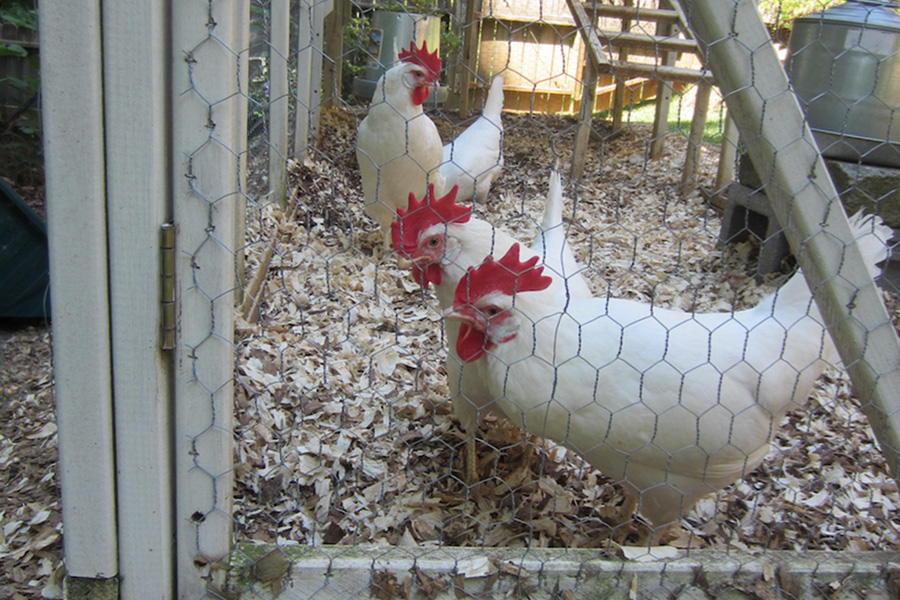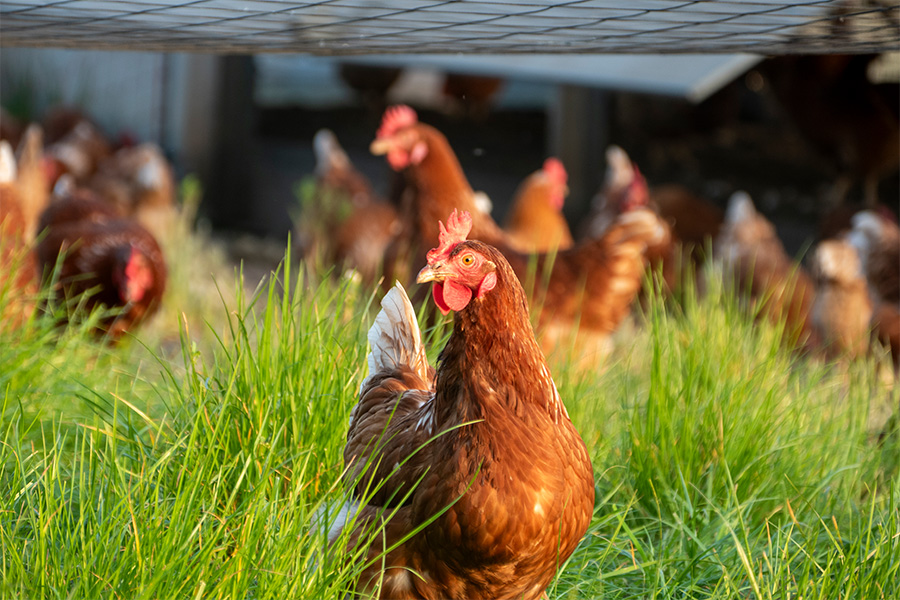Poultry
-

This publication provides information on (1) the nutrient content of manures available for land application, (2) how to determine manure application rates and whether supplemental fertilizer will be needed for maximum crop production and (3) how to use management techniques to maximize the fertilization potential of farm manures.
L. Mark Risse
|
-

Your coop is ready. You’ve built a covered run or exercise yard to keep your chickens safe from predators and wild birds that carry diseases. Your chicks are old enough to move outside, and you’re eagerly awaiting your first fresh eggs.
In the meantime, your chickens are producing something else on a daily basis: manure. How do you handle all of that poultry poop so that your neighbors don’t complain about the smell and the flies?
One good answer is composting. Properly composted poultry litter—manure mixed with bedding material, such as pine shavings—is a valuable soil amendment. However, just as it takes care and management to get your chickens into laying condition, it takes care and management to compost the litter from poultry housing environments.
Casey W. Ritz and Heather Kolich
|
-

Feather coverage is important for both thermoregulation and disease prevention. Because feathers are made of protein, there are obvious nutritional factors that affect feather coverage in high yield broiler breeds. This publication summarizes the importance and structure of the feather and the feed-related factors that impact feather coverage.
Justin Fowler
|
-

Providing the right nutrition for your chickens means ensuring that what they eat supplies all of the essential amino acids, fatty acids, carbohydrates, vitamins, minerals, and water that they will need to produce the meat or eggs you hope to collect. This publication provides an overview of what you should look for when choosing poultry feed and how to choose a diet that is appropriate for various types of poultry.
Justin Fowler
|
-

There are a number of different poultry production systems available today, and consumers commonly confuse organic poultry production with other systems. Pasture-raised poultry and natural poultry are not organically produced, as they do not meet all or any of the standards set by the National Organic Program, which regulates and certifies production systems as “organic.” Consumers should be aware of the differences between each of the poultry production systems as they purchase poultry products.
Claudia Dunkley
|
-

Amino acids are essential building blocks of proteins and are obtained from plant and animal products. Some amino acids can be synthesized by the chicken, while others (essential amino acids) must be supplied in the diet. In organic poultry production, the sources of these essential amino acids must be organic. This publication compares the amino acid content, digestibility, and availability of organic soybean meal with conventional soybean meal.
Sammy E. Aggrey, Claudia Dunkley, and Justin Fowler
|
-

Biosecurity refers to procedures used to prevent the introduction and spread of disease-causing organisms in poultry flocks. Because of the concentration in size and location of poultry flocks in current commercial production operations and the inherent disease risks associated with this type of production, it is imperative that poultry producers practice daily biosecurity measures.
Dan L. Cunningham and Brian D. Fairchild
|
-

Research on improving broiler housing is ongoing. Energy costs are becoming more significant to the grower’s bottom line and housing construction, equipment and operation will be paramount in helping to make sure the houses are operated as efficiently as possible. As technology and equipment is redesigned and developed, researchers will continue to examine how broiler housing can be heated, cooled, and built in such a way that modern broilers continue to reach their genetic potential using the most economical and efficient methods.
Brian D. Fairchild
|
-

The goal of this publication is to introduce the development of a more accurate measurement of water-use efficiency based on the bulk quantities of materials handled at each processing step at a poultry slaughter plant.
Brian H Kiepper
|